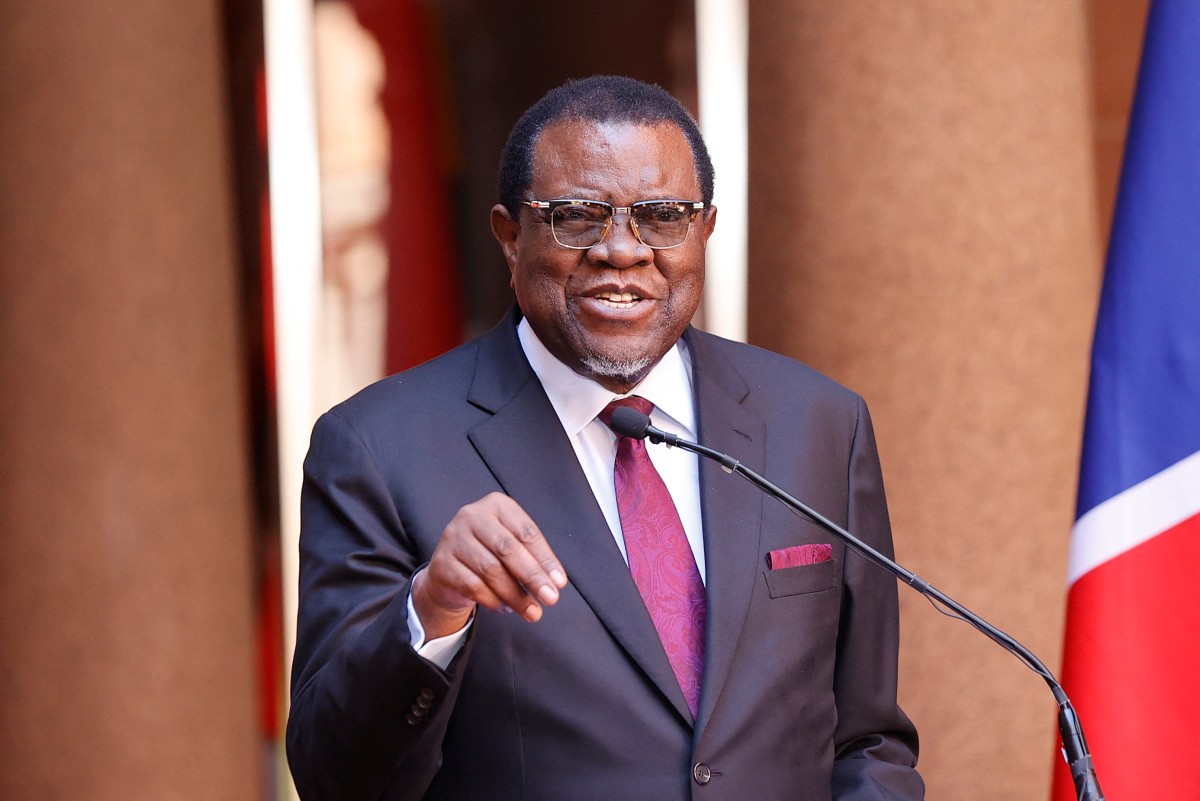What you don’t know about late Namibian President
Hage Geingob, Namibia’s longest-serving prime minister and third president, was an anti-apartheid activist turned statesman, who cut a reassuring figure. He passed away early Sunday in a hospital in the capital Windhoek, where he was receiving treatment for cancer. He was 82. Born in a village in northern Namibia in 1941, Hage Gottfried Geingob was […]

(FILES) Namibian President Hage Geingob speaks during a joint press conference with South African President Cyril Ramaphosa during his state visit to South Africa at the Union Buildings in Pretoria on April 20, 2023 (Photo by Phill Magakoe / AFP)
Hage Geingob, Namibia’s longest-serving prime minister and third president, was an anti-apartheid activist turned statesman, who cut a reassuring figure.
He passed away early Sunday in a hospital in the capital Windhoek, where he was receiving treatment for cancer. He was 82.
Born in a village in northern Namibia in 1941, Hage Gottfried Geingob was the southern African country’s first president outside of the Ovambo ethnic group, which makes up more than half the country’s population.
He took up activism against South Africa’s apartheid regime, which at the time ruled over Namibia, from his early schooling years before being driven into exile.
- Ehindero, former IGP’s son, Replaces Tinubu’s minister At House of Reps
- Nigerians to pay more for goods as FG raises cargo clearance rate again
He spent almost three decades in Botswana and the United States, leaving the former for the latter in 1964.
The tall, deep-voiced leader studied at Fordham University in New York, and much later in life received a PhD in the United Kingdom.
While in the US, he remained a vocal advocate for Namibia’s independence, representing the local liberation movement, SWAPO, now the ruling party, at the United Nations and across the Americas.
In the early 1970s he started a career working for the UN on governance issues.
Seen as a centrist, he returned to Namibia in 1989, a year before the country’s independence.
“I embraced the soil of Namibia after 27 years in exile. Looking back, the journey of building a new Namibia has been worthwhile,” he said in a Twitter post in 2020 posting a photo of his younger self kissing the tarmac after landing back home.
‘Fish rot’
When SWAPO won the first vote in 1990, Geingob was appointed prime minister – a position he held for 12 years before returning to it again in 2012.
In 2014, as the party comfortably won yet another vote, riding on the legacy of its role in the liberation struggle, Geingob became president.
In between top jobs, the composed yet stern talking leader who sported wide-rimmed glasses and a tuft of grey hair on his chin, held various ministerial and internal party positions.
But his first term as president was tainted by a recession, high unemployment and graft allegations.
In 2019, documents published by WikiLeaks suggested that government officials took bribes from an Icelandic firm in exchange for continued access to Namibia’s fishing grounds.
The “fish rot” scandal threatened Geingob’s prospects of a second term, with the head of state also coming under fire for pumping money into a bloated administration and granting contracts to foreign rather than local companies.
His share of the vote dropped considerably in 2019 from the 2014 height of 87 per cent, but he was still able to comfortably sail to victory with 56 per cent of preferences.
Football lover
He suffered a couple of health scares in his later years, having undergone brain surgery in 2013 and a heart valve surgery in South Africa in June 2023.
An avid football fan, he played the sport as a young man, which earned him the nickname “Danger Point”.
He was married three times, in 1967, 1993 and again in 2015 and had as many children. His last consort, Monica Geingos is a lawyer and businesswoman.
